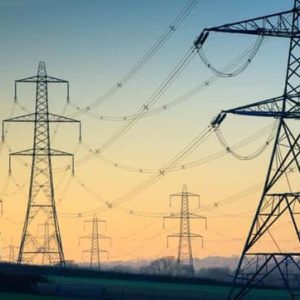This guest blog comes courtesy of Martin Farley, King’s Sustainable Research Manager.
Ultra-low temperature (ULT) freezers are an essential resource in medical science, as they allow biological samples and vaccines to be preserved safely at very low temperatures. Many lifesaving vaccines, including the Pfizer (COVID-19) vaccine, require ULT freezers for storage and they are vital to research laboratories, including ours here at King’s, where we have over 550!
Like any cooling, freezers are extremely energy intensive, particularly ULT freezers. Depending on their age and model, these freezers can use the same amount of energy as the average UK home and require further energy to cool the spaces they occupy. Beyond the impact of energy consumption, cold storage devices utilise refrigerant gases, which are HFCs. While these gases are far less harmful on the environment than their predecessors (CFCs), they can still wreak havoc if released into the environment. In the UK, there are regulations in place to avoid their release, but old equipment can still lead to leakages.
So, what can we do to manage our ULT freezers sustainably?
- Procure energy efficient freezers – To start, we can aim to purchase more efficient units. At King’s, we promote sustainable procurement both through our tender process and sustainable lab programme (LEAF).
- Manage samples efficiently – Storing our samples efficiently means we can maximise our freezer space. King’s Department of Women & Children’s Health have recently transformed their sample management system by adopting microtubes that take up less than half the space of previously used containers. This has had the dual effect of increasing the internal capacity of each freezer and reducing the volume of plastic required. Shared around the college, this practice is now being adopted by others, including groups within the School of Basic & Biomedical Sciences.
- Store only what we need – By removing samples that are no longer needed we can consolidate our holdings. To support this, King’s Freezer Replacement Scheme offers to pay for new, ultra-efficient, fully-racked ULT freezer if researchers can consolidate the contents of freezers in their area, so that two older freezers can be taken away in exchange for one new energy efficient one. This scheme aims to reduce carbon emissions and encourage the adoption of efficient management systems.
- Good housekeeping – Smart freezer management goes a long way! Our Good Practice Guide provides some great tips and tricks on maintenance such as defrosting and clearing filters.
- Reduce the temperature – Check what temperature the freezers are set at. While many operate at -80°C, historically they all were set to -70° That 10°C difference leads to an impressive 25-30% in energy saving, and has been implemented in some of King’s sites like the Wolfson Centre for Age-Related Diseases.
As our research and laboratory practices grow, we must ensure that consideration is given to the impacts on the environment and integrating sustainable practices such as those listed above is crucial to delivering impactful research, while minimising our environmental impact. Whether you are directly involved in freezer management, or have a supporting role, we can all play a part in sharing this knowledge and raising awareness amongst our peers, which in turn can go a long way in creating a wider mindfulness about their environmental impact and how we can support a more sustainable infrastructure at King’s.

 Marco Hacon is currently studying for a Master’s degree in Environment, Politics and Development here at King’s. Before this, he worked in a few start-ups and scale-up companies with social purposes, where he gained a basic understanding of sustainability. He is a strong believer in a just and equitable clean energy transition. He is excited to write about this as well as more King’s-related energy topics for the team’s blog. He also wants to help develop toolbox talks for King’s staff and teams that centre on how to use energy sustainably.
Marco Hacon is currently studying for a Master’s degree in Environment, Politics and Development here at King’s. Before this, he worked in a few start-ups and scale-up companies with social purposes, where he gained a basic understanding of sustainability. He is a strong believer in a just and equitable clean energy transition. He is excited to write about this as well as more King’s-related energy topics for the team’s blog. He also wants to help develop toolbox talks for King’s staff and teams that centre on how to use energy sustainably.
